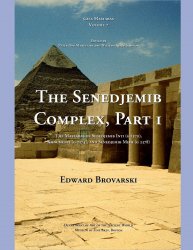
Author:Edward Brovarski
The Senedjemib Complex, Part 1
Museum of Fine Arts, Boston
2000
Format: pdf
Size: 169.02 MB
Language: English
In 1901 the Egyptian Antiquities Service granted permits for scientific excavations at the royal pyramids and private mastaba tombs of Giza. The American team trader archaeologist and museum curator George Andrew Reisner (1867-1942), became the Joint Egyptian Expedition of Harvard University and the Museum of Fine Arts, Boston, in 1905, and continued almost uninterrupted until 1942. Despite the publication of his monumental History of the Giza Necropolis I-II, Reisner was unable to begin the tomb-by-tomb publication series he originally envisioned. This task was initiated by William Kelly Simpson in the early 1970s in the form of the Giza Mastabas Series. The goal of the project is to continue and complete the publication of Reisner's excavations at Giza, fully documenting the mastaba tombs with descriptive text, hieroglyphic translations, facsimile line drawings, plans, sections, and photographs.PThis book presents an account of the excavation of Senedjemib Inti (G2370), Khnumenti (G2374) and Senedjemib Mahi (G2378). Excavations in 1912-13 revealed that the three tombs formed part of a great complex of family tombs erected around a paved court, and that four generations of the Senedjemib family served as viziers of Egypt and royal architects over a hundred year period in the later old Kingdom. The tombs document changes in tomb architecture and decoration from the end of the fifth dynasty to the end of the sixth. Additionally they contain two lengthy autobiographical inscriptions.





 Register!
Register! World History
World History









